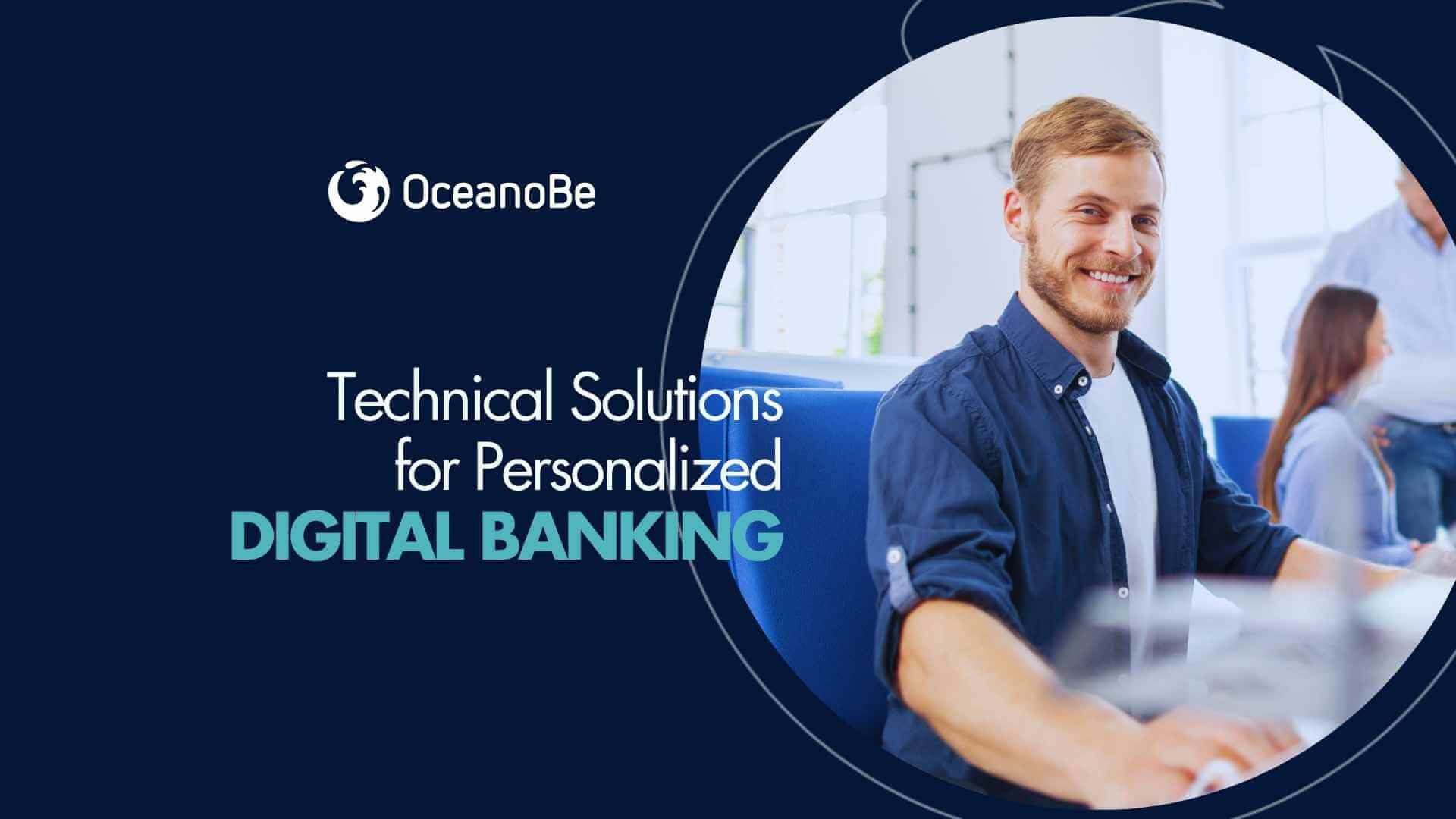Technical Solutions for Personalized Digital Banking
Strategies to Enhance Customer Engagement
Strategies to Enhance Customer Engagement

The financial industry is moving beyond generic banking experiences and toward data-driven personalization, where every customer interaction is tailored to individual needs. Today’s consumers expect seamless, relevant, and intuitive digital banking services, and financial institutions must adapt to these expectations to retain customers, enhance engagement, and build long-term loyalty.
At OceanoBe Technology, we work with financial institutions to develop custom, scalable digital banking solutions that integrate personalization, behavioral analytics, and data-driven insights. This article explores the importance of personalized financial services, the role of big data in banking customization, the balance between personalization and data privacy, and key strategies to enhance customer engagement.
Banks must carefully design their personalization approach to provide valuable experiences without overwhelming customers with irrelevant offers. A successful customer engagement strategy involves:
Offering Context-Aware Financial Insights
Customers expect their banking apps to help them manage their finances proactively. Personalization should include:
Automated transaction categorization for smarter budgeting.
Spending insights with alerts when expenses exceed monthly averages.
Smart saving recommendations, like automatic transfers to a high-yield savings account based on income patterns.
For example, if a customer is spending above their usual grocery budget, the app can suggest spending limits or cashback credit card options.
Customizing Credit & Loan Offers Based on Behavior
Instead of generic credit card promotions, banks can use transactional and behavioral data to suggest pre-approved credit cards with customized spending limits, loan offers with dynamic interest rates based on financial behavior, or "Buy Now, Pay Later (BNPL) options for customers who frequently shop online.
This approach increases credit adoption rates while ensuring offers are relevant and timely.
To implement customized credit and loan offers based on behavior, banks can leverage a combination of AI, big data analytics, real-time processing, and API-driven architectures. Here are some of the key technologies involved: Apache Kafka, Elasticsearch & Kibana, Drools / OpenRules, Azure Personalizer / AWS Personalize, GraphQL / REST APIs, Spring Boot / Node.js, OAuth 2.0 & OpenID Connect, Auth0, Zero Trust Architecture.
Enhancing User Experience (UX) in Digital Banking
A truly personalized digital banking experience is built on adaptive interfaces that analyze user behavior and dynamically adjust to individual preferences. By leveraging AI-driven behavioral analytics, machine learning algorithms, and real-time data processing, banks can deliver seamless, intuitive interactions that anticipate user needs.
For instance, an AI-powered recommendation engine can analyze transaction history and suggest frequently used services at the forefront of the user interface, reducing friction in everyday banking tasks. Customizable dashboards, powered by front-end frameworks like React or Angular, allow users to arrange widgets according to their priorities, while back-end microservices ensure real-time data synchronization.
Smart automation further enhances convenience by predicting recurring transactions and proactively displaying shortcuts for scheduled bill payments, fund transfers, or subscription renewals. Leveraging event-driven architectures with Kafka, banking apps can process user activity in real time, triggering automated reminders or contextual suggestions. By implementing these advanced technologies, digital banking platforms can evolve beyond static interfaces, delivering hyper-personalized experiences that drive engagement and user satisfaction.
Leveraging Personalized Customer Support
Banking customer service can be enhanced through personalized support experiences:
AI-powered chatbots that provide responses based on past interactions.
Priority customer routing for high-value clients needing immediate assistance.
Predictive support suggestions based on recent transactions (e.g., suggesting a credit card limit increase after a declined transaction).
By combining human and AI-driven interactions, banks can streamline support while maintaining a personal touch.
Conclusion
Personalization in digital banking is no longer just an added feature—it is a core component of modern financial services. Customers expect banks to understand their needs, provide timely financial insights, and offer relevant product recommendations based on real-time behavior.
By integrating big data analytics, behavioral insights, and secure customer interactions, financial institutions can build highly personalized, AI-enhanced banking experiences that drive customer loyalty and business growth. However, success in personalization requires careful data handling, compliance with financial regulations, and a focus on cybersecurity.
At OceanoBe Technology, we help banks and fintech companies implement scalable digital banking solutions that prioritize customer engagement, seamless personalization, and data security. With the right strategy, banks can transform digital interactions into long-term customer relationships.